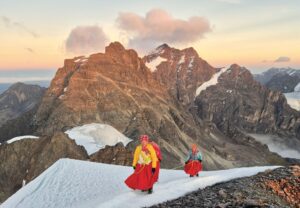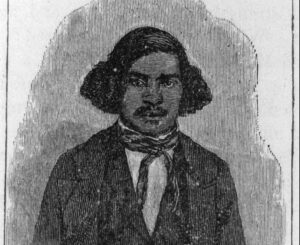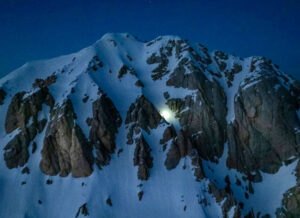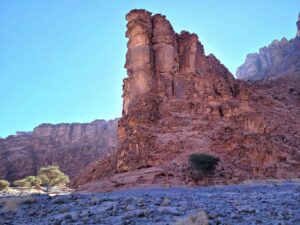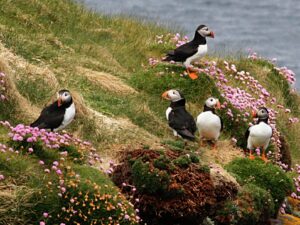With a bonanza of polar bears readily available for touristic photo shoots, Churchill, Manitoba, has been called “The Polar Bear Capital of the World”. A Danish explorer named Jens Munk once ended up near this present-day tourist mecca not because he wanted to gawk at polar bears, but because he was looking for the Northwest Passage. His two ships, the frigate Unicorn and the sloop Lamprey, were forced into an estuary of the Churchill River due to the notoriously unpredictable weather in Hudson Bay.
Just after Monk’s arrival in September 1619, the northern winter began its siege. Monk’s crew started dying one by one, and by spring of the next year, only Munk himself seemed to be alive. He was expecting, perhaps even looking forward to his own death when two of his crewmen who’d earlier gone ashore returned to the boat and helped him off the Unicorn, then fed him some of the previous year’s berries and plant roots. His health returned, and the three men sailed back to Denmark.
Caused by a Vitamin C deficiency, scurvy was probably the expedition’s main culprit. For Munk’s men had no access to Vitamin C during their overwintering. In other words, they had no fresh meat (note: raw meat is better than cooked meat as an anti-scorbutic), no greens, and no fruit. They might have had medication for their bleeding gums, loose teeth, swollen eyes, and painful joints, but the ship’s doctor couldn’t read the Latin names in his medical kit.
The 63 bodies were either put into unmarked graves near the shore or simply rolled off the ships. A hundred years later, James Knight, who was setting up a Hudson Bay Company post at this site, found numerous “sculls and bones of men” at the Munk overwintering site. He also noted that “a great many of the graves be under some part of our building.”

Jens Munk’s route to Churchill. Photo: Wikipedia
Lest you think that Knight was inconsiderate of the Danish dead, the only place in the vicinity flat enough for a building was where the graves had been dug.
On a visit to Churchill, I decided to investigate the Munk overwintering site, so I went across the river with a local guide named Kelsey Eliasson. We put the boat ashore in a small cove and immediately noticed quite a bit of scurvy grass (Cochlearia offinalis), a plant that’s very high in Vitamin C — higher, in fact, than oranges or lemons. Since Roman times, it had been eaten or used a tea to fight off scurvy. Apparently, Munk and his men were unaware of this fact.
Now we walked uphill a hundred or so feet because, rather than being on the shore, the site of Munk’s overwintering would now be inland due to glacial rebound — i.e., the perpetual rise of land in the Hudson Bay area. We searched for a piece of cutlery, a candlestick, a clay pipe, or perhaps a stray Danish bone. Meanwhile, Kelsey kept his rifle at the ready in case a polar bear showed up and decided that, in the absence of a seal, one of us might be a decent edible.

Kelsey Eliasson. Photo: Lawrence Millman
Soon we found ourselves mired in a dense forest…a dense forest of willows two to three feet high. Since we had climbed up a modest slope, we were probably above the burial site, so we began climbing down the slope at a different spot than where we’d climbed up.
And then we found…berries. Crowberries, bilberries, gooseberries, and salmonberries. Berries galore.
Right away Munk’s overwintering became history in our thoughts, and we transformed ourselves into hunter-gatherers. Or I should say our hunter-gorgers, since we were now popping huge amounts of berries into our mouths.
I especially looked for cloudberries (Rubus chamaemorus), whose name (note: the other names are bakeapple and salmonberry) suggests that it possesses a bland, wispy flavor. Quite the contrary. With leaves very similar to the leaves of a maple, these bunched amber-colored berries in the Rose family carry a hint of sumptuous decay that suggests a fermented, red-blooded cherry.
Kelsey introduced me to eating the bright pink flowers of fireweed (Chamaenerion angustifolium), the first plant that usually colonizes eroded or waste areas in these parts. Chewing them will ease the discomfort of a sore throat, he told me. Since I didn’t have a sore throat, I returned to my cloudberry gorging.
In the end, we didn’t find a single Munk artifact or even a sliver of a 17th-century Danish bone. No matter. It’s the journey rather than the destination that matters…especially if that journey includes cloudberries.

